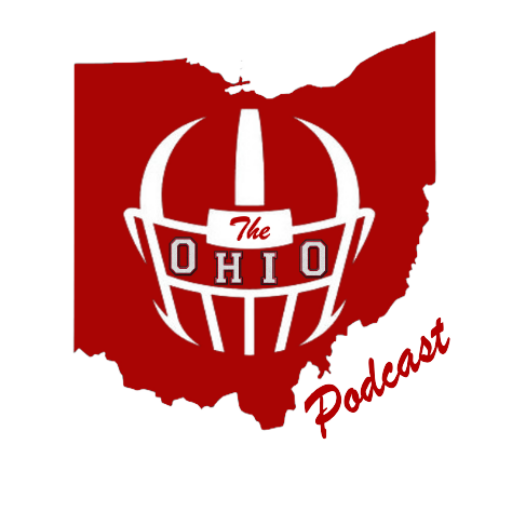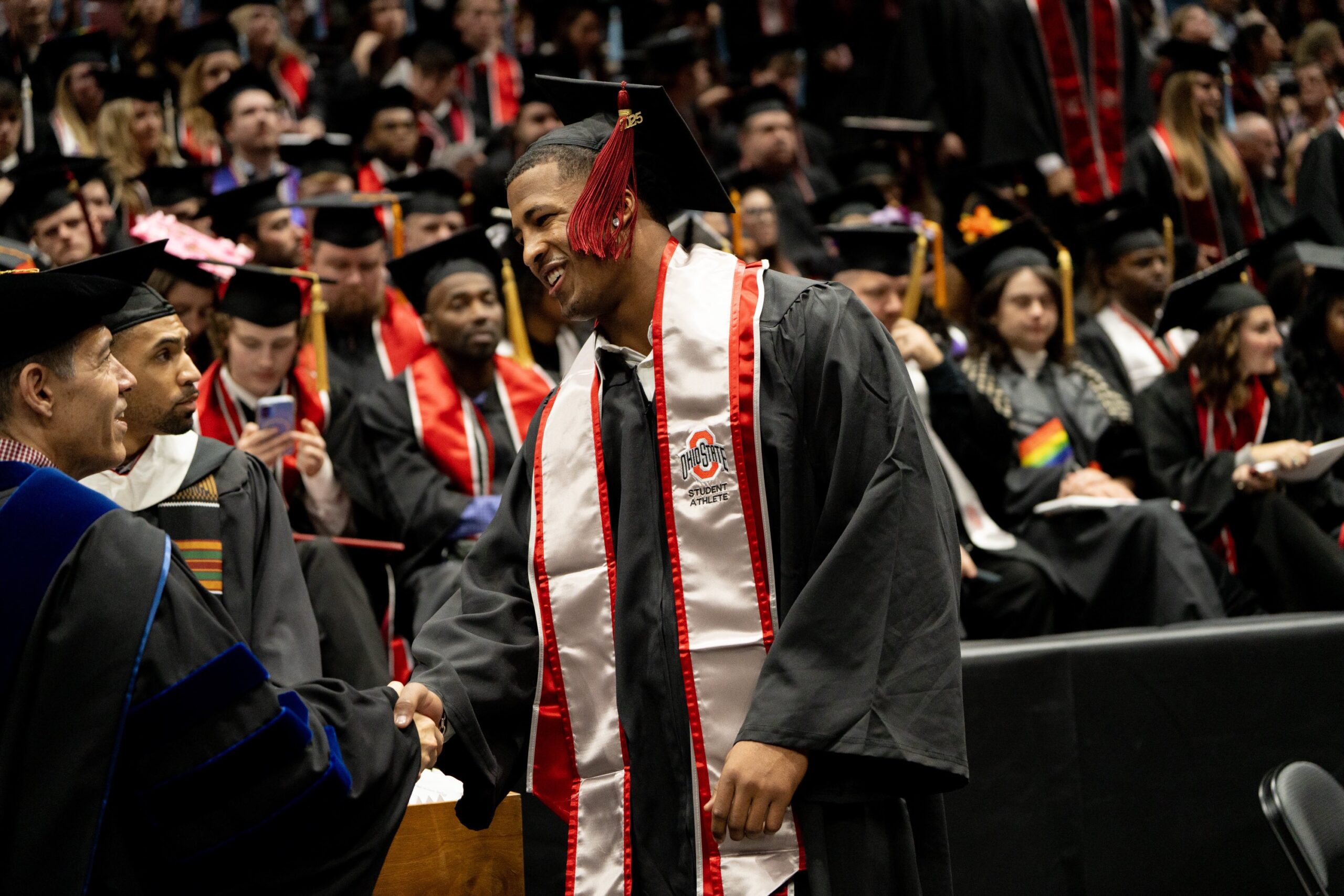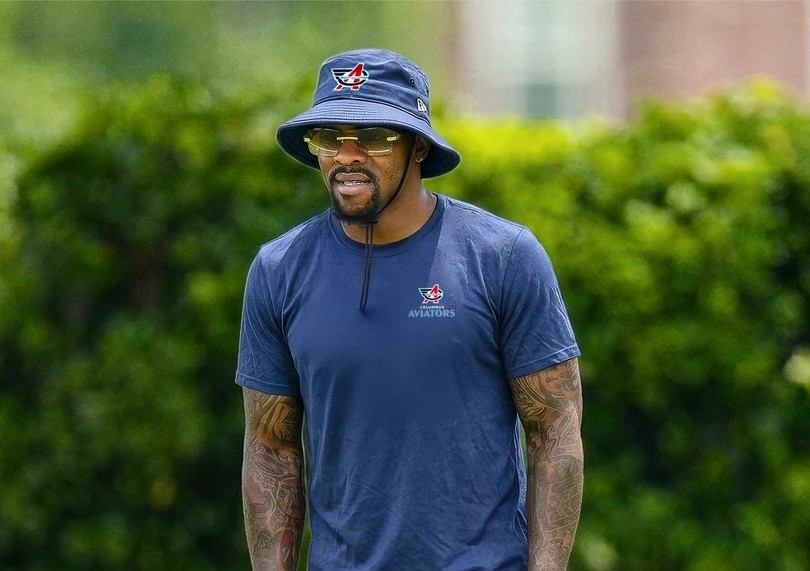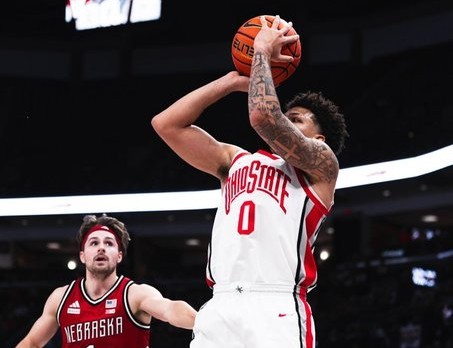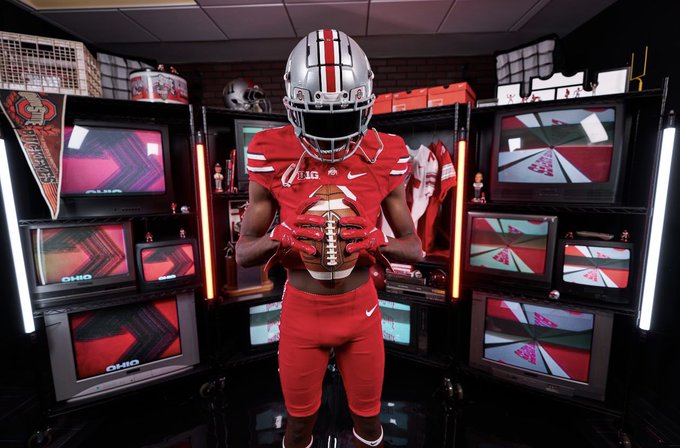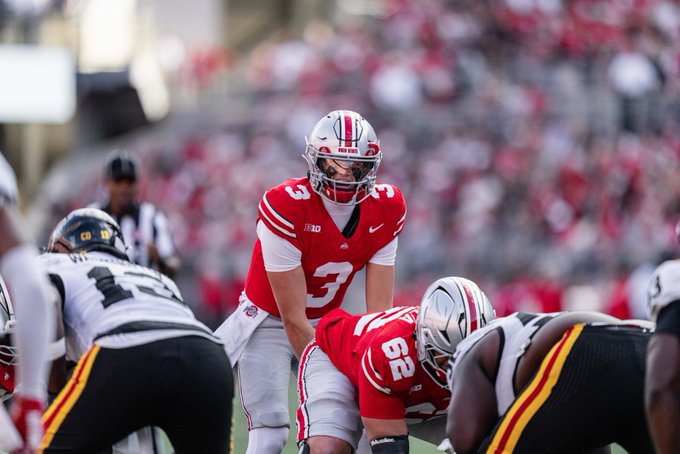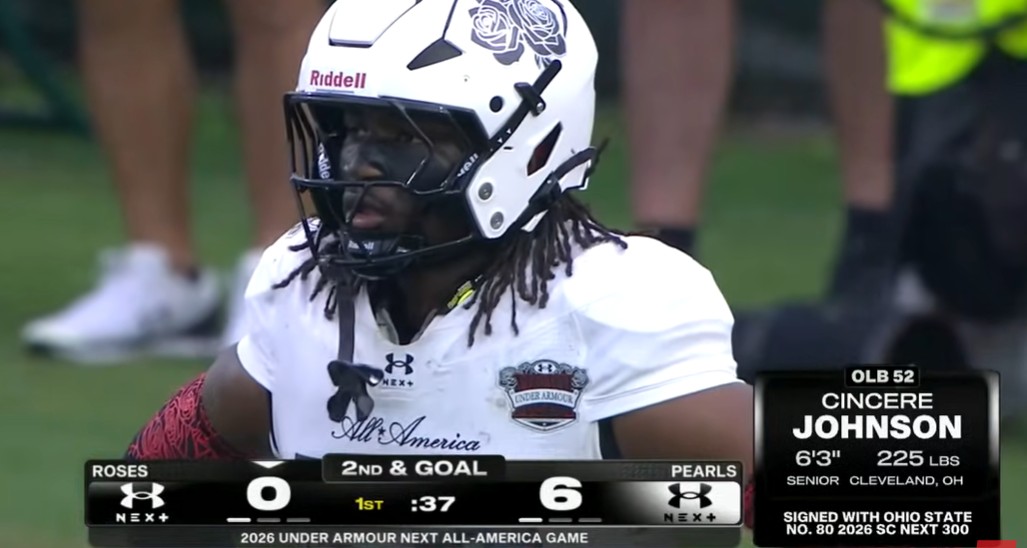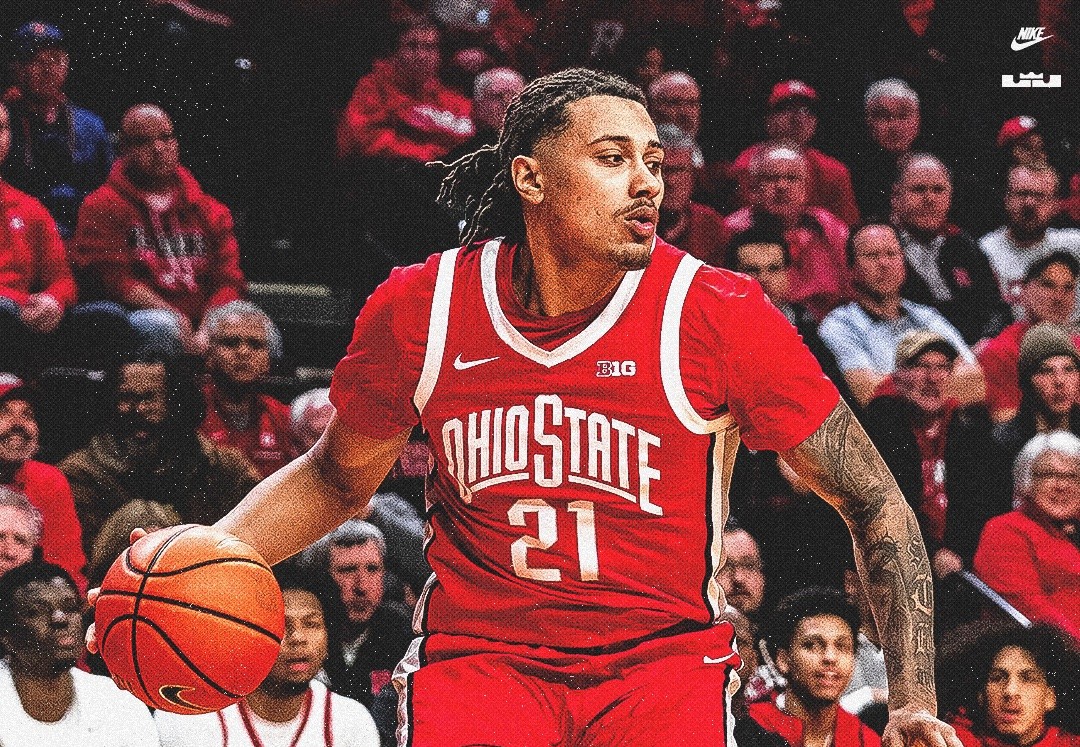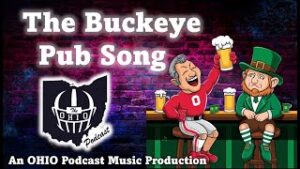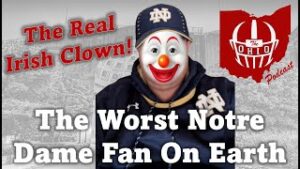The state of Ohio has produced some of the most legendary figures in sports history – Pete Rose, Ken Griffey Jr., LeBron James, Paul Brown, and the list goes on and on. Many of Ohio’s legends honed their skills and rose to prominence at THE Ohio State University. Some of these legends dominated their sport collegiately and in the Olympic or professional arenas. And a select few not only stood out but did things either on or off the field that transcended them beyond simply athletes, or even legends, but transformed them into icons of Ohio athletics. So, the obvious question exists, “what makes someone an icon?” Obviously the first consideration was their performance on the field, you cannot be a sports legend without having a stellar athletic career. But what else makes one transcend sport and enter the pantheon of greatness that is an icon? I considered factors such as public service, historic relevance, and how they represented themselves and the university after leaving Columbus.
10. Paul Warfield:
A native of Warren, Ohio, Warfield went to Warren G. Harding High School where he excelled at football, basketball, and track, where he was a state champion in the broad jump and set a state record in the 180-meter hurdles. He enrolled at The Ohio State University in 1960 and played through 1964. He was a member of the 1961 national championship team, and while he was a Buckeye, Warfield amassed several accolades including be 1st team all-Big Ten in 1962 and 1963, and an All-American in 1963. He was drafted in the first round of the 1964 NFL draft by the Cleveland Browns with pick number eleven. He went on to play thirteen seasons during his Hall of Fame career, during which he won one NFL championship, two Super Bowl titles, was an 8-time Pro Bowl selection, and led the league in receiving twice. Warfield was a member of the NFL’s All- Decade Team for the 1970’s and the NFL’s 100th Anniversary All-Time Team. His name is in both the Cleveland Brown’s Ring of Honor and the Miami Dolphins Walk of Fame. He was selected to the NFL Hall of Fame in 1983.
After his playing career, he returned to school and earned his master’s degree in telecommunications and served as a sports broadcaster, and later as the Cleveland Browns director of player relations before retiring.
9. Chris Spielman:
They may be no better example of an old-school linebacker than Chris Spielman. He graduated from Massillon Washington High School in 1984, a year after he earned the Dial Award as the nation’s top male high school scholar athlete. He enrolled at Ohio State in 1984 where he played until 1987. Spielman earned honors such as being named all-Big Ten on three occasions, and an All-American twice (including a unanimous selection in 1987). He won both the Chic Harley Award and the Lombardi Award in 1987. Spielman still ranks third all-time in tackles in Ohio State history and has two of the top five seasons in school history as well. He had one of the greatest ever performances in “The Game” in 1986 when he set a school record with 29 tackles versus That Team Up North. After leaving Columbus, Spielman had an eleven-year NFL career with the Detroit Lions, Buffalo Bills, and Cleveland Browns. He was a second-round draft pick of the Lions in 1988 and a consistent player throughout his career. Chris walked away from football in 1998 to be with his wife who was fighting cancer. He made a brief return with the Browns in 1999 but was forced to retire in the pre-season due to a neck injury. Throughout his NFL career, he earned All-Pro honors on three occasions. He was enshrined in the College Football Hall of Fame in 2009 and became a member of the Detroit Lions “Pride of the Lions” club in 2021.
Following his playing career, Spielman was a sports broadcaster, coach of the Columbus Destroyers of the Arena Football League and worked in the front office of the Detroit Lions. In 1998, Chris and Stefanie Speilman also founded the Stefanie Spielman Fund for cancer research following his wife’s diagnosis. In the 25 years since they founded the charity, over 26 million dollars has been raised for cancer research.
8. Cris Carter:
Ohio State in recent years has become known as “Wide Receiver U.” However, before Chris Olave, Garret Wilson, and Jaxon Smith Njigba, there was Cris Carter. Cris was born in Troy, Ohio and attended Middletown High School where he was a two-sport standout in football and basketball. He enrolled at Ohio State in 1984, and his impact was felt immediately. He was known for his precise route running, tremendous hands, and incredible acrobatic leaps. Despite losing his eligibility his senior year, he still ranks third in career receptions, fourth in career yards, and fifth in career touchdown receptions. He was a two-time all-Big Ten selection, and a consensus All-American in 1986. He is a member of the Buckeyes’ All Century Team and Varsity O Hall of Fame. As good as his college career was, his NFL career was better. He was only a fourth-round pick in the 1987 supplemental draft, but he would become a Pro Bowl selection eight times in the league. His accolades almost seem too numerous to mention. He led the league in receiving once, and touchdown receptions three times. He has won the Walter Payton Man of the Year award (given for outstanding off the field charity work) and the Bart Star Award (awarded to the player who best exemplifies character and leadership). He is enshrined in the Minnesota Vikings Ring of Honor and has had his #80 retired by the team. In 2013, Cris Carter was inducted into the Pro Football Hall of Fame.
After his career, Carter went to the broadcast booth, and has enjoyed a long and successful career as a commentator. In 2023, he decided to try his hand at coaching and began as a volunteer with former Buckeye coordinator Tom Herman at Florida Atlantic. He is now the Director of Player Engagement for the Owls.
7. John Havlicek:
Born in Martin’s Ferry, Ohio, Havlicek attended Bridgeport High School where he was a three-sport standout. He enrolled at Ohio State in 1959 and played through 1962. During that time, he would be a national champion in 1960, a third team All-American in 1961, and a consensus first team All-American in 1962. He averaged 14.6 points per game in college including 17.0 points per game as a senior. He was drafted by the Boston Celtics in the first round of the 1962 draft. It was as a Celtic that his legend grew. He was a thirteen-time all-star, eight-time champion, Finals MVP in 1974, five times defensive first team, a member of the 35th, 50th, and 75th anniversary All-NBA teams, and that is not even all the accolades. He also had his #5 retired by the Buckeyes and #17 retired by the Boston Celtics.
After his playing career, Havlicek did well for himself by investing in the early years of Wendy’s fast-food chain. He also served on the board of the Genesis Foundation, which assists children with disabilities and genetic disorders. John passed away in 2019 and the Boston City Hall was lit green in his honor.
6. Bill Willis:
Bill Willis was born in Columbus, Ohio on October 5, 1921. Willis enrolled at Ohio State in 1941 and was part of the team’s first national championship team the next season. Willis was undersized for a lineman at only 6’2 and 202 pounds, and despite that he was designated by Paul Brown to play middle guard (the precursor to the nose guard position) on defense. During his tenure at Ohio State, he earned first team All-Big Ten honors twice, and was named a first team All-American in 1944. In 1971, he was inducted into the college football Hall of Fame, and in 1977 he was enshrined in Ohio State’s Varsity O Hall of Fame. The Buckeyes retired his #99 in 2007, and in 2020 announced the Block O jersey in honor of Bill Willis.
After graduating from Ohio State, it was unlikely that Willis would have a professional football career. In 1945, there was no rule forbidding teams from signing African American players, however, to date there had been no black players in the league. Brown took a job coaching at Kentucky State and was prepared to begin a career in the Canadian Football League when his former coach Paul Brown contacted him about trying out for the newly formed Cleveland Browns of the All-American Football Conference. Willis made the team along with another African American player, fellow Ohioan, Marion Motley. Willis throughout his NFL career was a six-time all-pro selection. He won four AAFC championships and one NFL title. He was a member of the NFL’s All-Decade Team for the 1940’s and was enshrined in the Cleveland Browns Ring of Honor. In 1977, he was inducted into the Professional Football Hall of Fame.
The legacy of Bill Willis is one of true triumph over adversity. Despite being born in the Depression Era, and battling racism during his life, the undersized lineman never gave up. He was one of the two players to shatter the color barrier in professional football, a feat which occurred months before Jackie Robinson broke the color barrier in baseball. After his playing career ended, he worked with young people in the Columbus and Cleveland communities which culminated in his appointment as the Chairperson of the Ohio Youth Commission.
5. Jerry Lucas:
Jerry Lucas was born in Middletown, Ohio on March 30, 1940. Lucas began playing varsity as a sophomore at Middletown High School. In his three seasons as a starter, his teams had an unbelievable record of 76-1 and won two state titles. He would average just under 32 points per game in high school which led to him becoming a two-time high school All-American and a two-time winner of the coveted Mr. Basketball USA award. As a Buckeye, Lucas would continue to excel. He led college basketball in rebounding twice, was named to the All-Big Ten team three times, was a consensus first-team All-American three times, won the Final Four’s Most Outstanding Player award twice, and was twice named the National College Player of the Year. The Buckeyes won the 1960 National Championship with Lucas leading a team that featured several prominent future NBA players and coaches.
After leaving Columbus, Lucas was selected by the Cincinnati Royals in the 1962 NBA draft. He played for the Royals, San Francisco Warriors, and New York Knicks over his eleven-year professional career. He went on to become rookie of the year, a three-time first team All-NBA selection, a two-time second team All-NBA selection, a seven-time All-Star, an All-Star MVP, and in 1973 he played for the World Champion New York Knicks.
In 1980, Lucas was enshrined in the Basketball Hall of Fame. Lucas will be remembered as one of the greatest basketball players of all time. An unselfish player, a great rebounder, proficient scorer, and one of the first “big men” with range.
4. Howard Cassady:
Howard “Hopalong” Cassady was born on March 2, 1934, in Columbus, Ohio. The Central High graduate enrolled at Ohio State in 1951. Cassady played half back and defensive back for the Buckeyes from 1952-1956. During that time, he amassed several awards and accolades. He was a two-time first team All-Big Ten selection, a two-time Sporting News Player of the Year, two-time unanimous All-American, UPI Man of the Year, Maxwell Award winner, Heisman Trophy winner, and in 1954 – a National Champion. He was drafted in the first round of the 1956 NFL draft with the third overall pick by the Detroit Lions.
Cassady’s professional career spanned eight seasons with the Detroit Lions, Cleveland Browns, and Philadelphia Eagles. In 1957, his Lions throttled the Cleveland Browns to win the NFL championship. Following his retirement, he returned to Columbus and became an entrepreneur and served as a scout and coach for the Columbus Clippers, the AAA affiliate of the New York Yankees.
3. Jack Nicklaus:
Jack Nicklaus was born in Columbus, Ohio on January 21,1940. He was a natural athlete competing in baseball, basketball, football, and tennis, track and field, and of course golf. The Golden Bear began playing golf at 10 years old. Nicklaus won five consecutive Ohio State Junior Golf titles beginning at age 12. At age 14 he won the Tri-State High School Golf Championship, and at 15 qualified for his first US Amateur. In all, Jack would win 27 events in Ohio by the time he was 17 years old. He then went to Ohio State where he would compete collegiately.
While at Ohio State, Jack won the US Amateur Open Twice, an NCAA and conference championship. After 3 ½ years at Ohio State, he turned pro. He recorded 117 professional wins, including a record 18 major championships. He is the most decorated golfer in the sports illustrious history having been enshrined in the World Golf Hall of Fame, being named a five-time PGA Player of the Year, winning both the Bob Jones and Payne Stewart Awards as well as the PGA Lifetime Achievement Award, and being a recipient of the Congressional Gold Medal.
2. Archie Griffin:
If you are a Buckeye fan, there is no doubt you know who Archie Griffin is. The Columbus Eastmore High School graduate led his team to a city league title in his senior year before coming to Ohio State where he became a legend. Archie played from 1972-1975 for Ohio State. To this day, he is still the team’s all-time leading rusher with 5,589 yards. He also owns the sixth best single season rushing in Buckeye history with 1,695 yards. During his time at OSU Archie was named three-times to the All-Big Ten first team, Big Ten Player of the year twice by the Chicago Tribune, two-times UPI Player of the year, two-time Sporting News Player of the Year, a two-time Walter Camp Award winner, a first team All-American, and college football’s only two-time Heisman Trophy winner. He was taken #24 in the first round of the 1976 NFL draft by the Cincinnati Bengals.
After a pedestrian professional career, Archie returned to Columbus to serve as the President of the Ohio State Alumni Association. He also spun his notoriety into spokesperson positions for major companies such as Kroger and Motorists Insurance who were major contributors to the Ohio State athletic department.
1. Jesse Owens:
Jesse Owens grew up in Ohio in Cleveland, Ohio. He attended Fairmount Junior High School where he began running track. He had to practice before school because he had to work after school. Owens excelled through middle school, and garnered national attention when he was in high school at East Technical High School in Cleveland. He ran a 9.4 100-meter dash equal to the world record then.
Owens attended Ohio State University after graduation. While in Columbus, his speed earned him the moniker “The Buckeye Bullet.” He had remarkable success as a collegiate athlete. In both 1935 and 1936 Owens won an unprecedented four NCAA championships for a total of eight total titles over the two seasons. Despite all his success, Owens faced many hardships as African American man in the 1930’s. He was not eligible for a scholarship, so he had to maintain a part-time job while in school. He was not permitted in on-campus housing or dining, therefore he had to live off campus and could only eat in “black-only” restaurants.
For all Owens amazing athletic feats, he made his mark on history at the 1936 Summer Olympics in Berlin, Germany. In the face of fierce racism and in a hostile environment, he went out and captured four gold medals (the 100-meter, the 200-meter, the 4 x 100-meter relay, and the long jump). Owens victories were a figurative slap in the face to Hitler who was trying to highlight Germany as the world’s most dominant society using the games as his platform. Owens impact on sports and society following this performance was far reaching. He was awarded the Presidential Medal of Freedom in 1970 – the highest honor the President can bestow upon a civilian. In 1979, President Carter awarded him the Living Legend Award. USA Track and Field created the Jesse Owens Award, given annually to the nation’s top track and field athlete. He was an inaugural member of the Olympic Hall of Fame. In 1990, Owens was posthumously awarded the Congressional Gold Medal – the highest honor congress can award a civilian. In 2001, Ohio State renamed their track and field facility Jesse Owens Memorial Stadium. Owens has been the topic of numerous books and films and has even twice been immortalized by placing him on postal stamps. Without a doubt, Owens is the greatest icon in Buckeye history.
